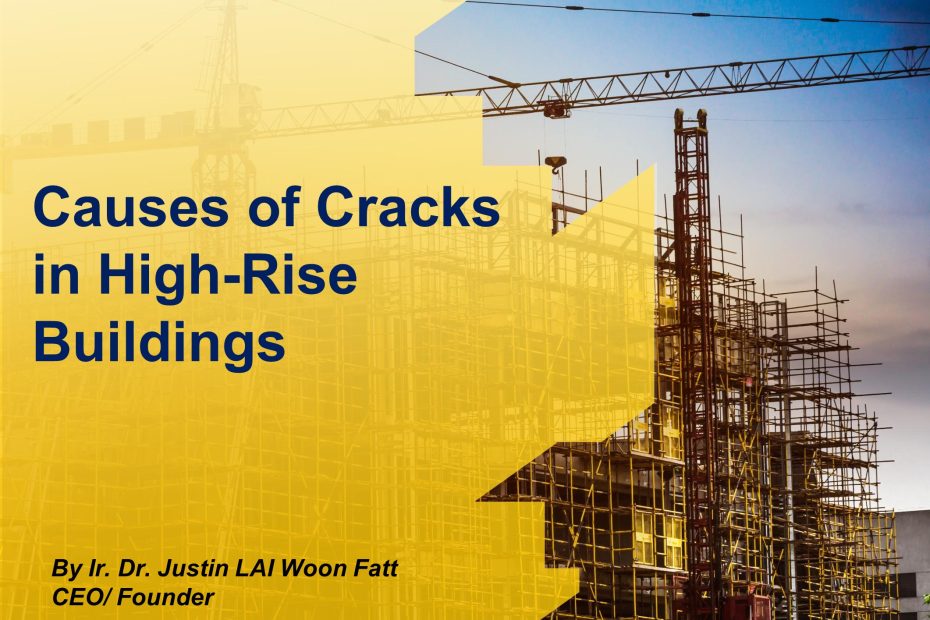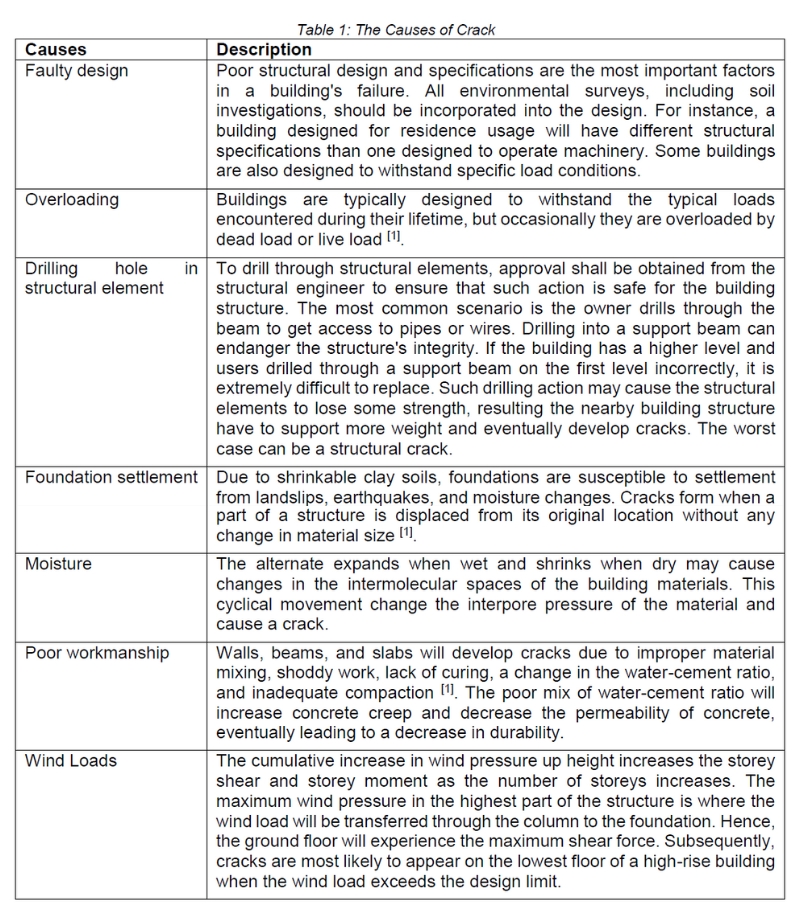Author: Ir. Dr. Justin LAI Woon Fatt | 30 June, 2023
In this modern era, with the rise of population densities and land prices, the city is being developed with an increasing number of high-rise structures. It has also driven up demand for buildings that rise vertically in urban areas for both commercial and residential uses.
Building cracks are a global issue that affects people all over the world. When the stress in a building component exceeds its strength, cracks form. External forces like dead load, live load, wind load, seismic loads, or foundation settlement may cause stress in a building’s structural elements. Internal factors such as temperature changes, moisture changes, and chemical reactions can also lead to stress. Cracks can be formed in structures for a variety of reasons. It can be classified as structural or non-structural. The most common structural cracks are due to poor design, foundation settlement, wind load, and overloading. Non-structural cracks can form as a result of any external cause, such as moisture variation, changes in temperature, or other factors.
This article includes research on cracks, what their causes are, and how they affect structures. It is crucial to understand cracks because they are common today. To understand the fundamental causes of crack formations, every factor that is considered during the design phase of a high-rise building is included in the list of its causes. The crack, though currently minor, has the potential to grow significantly in the future. It is essential to correspond with a structural engineer as they can recommend various preventive measures against the occurrence of cracks and solutions to the existing issue without impacting other areas of the structure.
Concrete is currently one of the composite materials that is typically used at every stage of construction, but it is susceptible to damage or defects throughout its service life for a variety of reasons. Table 1 shows the causes of cracks might be due to:
Effect of cracks
Crack increases the structure’s vulnerability to external effects, expedite ageing, and can reduce the structure’s mechanical resistance. Furthermore, cracks impair a structure’s capacity to withstand stress and could cause it to collapse. If cracks appear, it is important to assess how they will affect the structure’s strength and to create a monitoring schedule as the impact of cracks could be enormous to the building occupants. The building occupants have to contend with negative effects such as uncomfortable living conditions, security risks, and high repair costs [2]. It is undeniable that a user’s comfort and productivity are correlated with the performance of the building they use to live in, learn in, conduct research in, or work around, thus maintaining a building has an ongoing impact on everyone’s life [2].
It should be noted that surface examination cannot determine the cause of the problem by simply observing the visible signs in the building. After using proper diagnostic techniques, only an experienced structural consultant can recommend the repair methodology [3].
Conclusion
With the surging demand for high-rise buildings, an ever-growing number of cracking cases in high-rise buildings is being observed. Structure deterioration can be caused by a variety of factors. When defects are spotted in the building or structure, it is necessary to seek advice from a professional structural engineer. With properly planned inspections and test or even design verifications, a customized solution could then be generated to mitigate or rectify the defects before they worsen.
Ir. Dr. Justin LAI Woon Fatt
CEO/ Founder
IPM Group
References:
[1] R. Pathak & D. Rastogi. (2017). Case Study on Cracks in Public Buildings and their Remedies. International Journal of Science and Research (IJSR), Volume 6 Issue 5, 325-329.
[2] A. Daud & M. F. Ishak. (2018). Defect on High Rise Government Office Buildings in Kelantan. 3rd Undergraduate Seminar on Built Environment and Technology 2018 (USBET2018), 126-130.
[3] D L. Sonani & P. M. Attarde. (2019). Causes, Prevention And Repairing of Cracks In High Rise Building”. IJSART, Volume 5 Issue 11, 39-45


